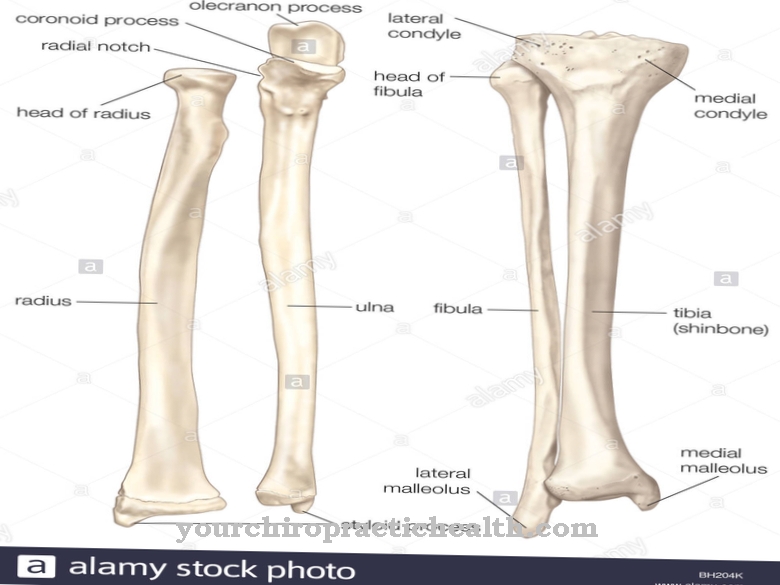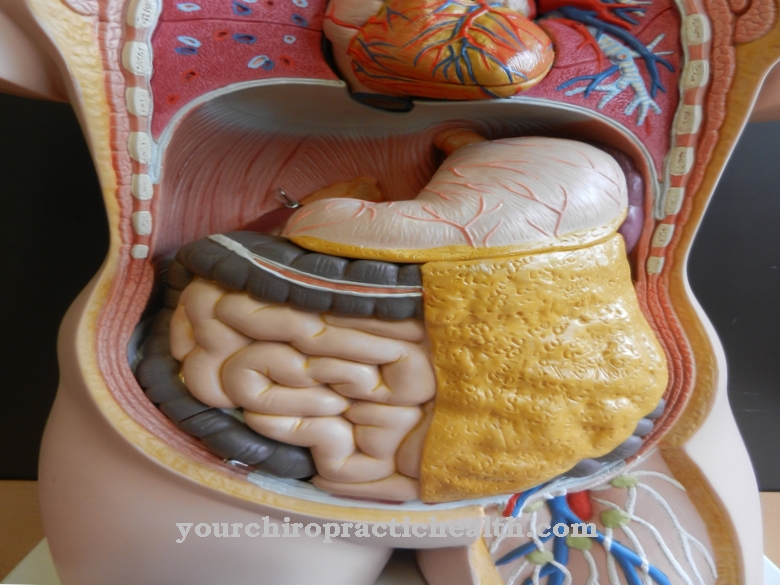Of the Transverse sinus ensures the blood supply to the brain. It is located in the lower part of the skull. Venous blood flows in it.
What is the transverse sinus?
The blood supply in the human brain is regulated by various blood conductors. They are divided into cerebral arteries, superficial and deep cerebral veins and the sinus durae matris. Venous blood flows in the veins and in the sinus durae matris. They all belong to the central nervous system of the human organism.
The most important sinus durae matris include the sinus sagittalis superior and inferior, the sinus rectus, sinus transversus as well as sinus sogmoideus and the cavernous sinus. The transverse sinus lies under the top of the skull at the back of the head. More veins run from it into the deeper layers of the brain. It ensures blood circulation in the brain. It supplies the brain tissue with it, helps remove brain water and regulates the temperature within the brain. The transverse sinus has the special property that it can be asymmetrical. In addition, it can be unilateral in some people. Transverse sinus thrombosis is a disease that can develop specifically in this blood conductor. It can lead to strokes.
Anatomy & structure
The dura mater forms duplications. This process creates cavities within the brain tissue that are used as venous blood conductors. Medical professionals refer to it as the durae matris or dural sinus.
The blood from the brain, meninges and eye sockets collects in the blood conductors. It continues to flow to the internal jugular vein, which is located behind the fossa. The largest of these blood conductors is the superior sagittal sinus. It runs along the upper edge of the falx cerebri. This is the cranial sickle. At the lower edge is the inferior sagittal sinus. This ends in the rectus sinus. The rectus sinus flows in the confluens sinuum together with the superior sagittal sinus. The transverse sinus runs to the right and left of the confluens sinuum.
It frames the back of the skull and is S-shaped. Its course is along the occipital base of the skull. The durae sinus begins as the superior sagittal sinus, becomes the transverse sinus and merges into the sigmoid sinus. This ends in the jugular foramen. Various superficial veins extend along the entire durae sinus. These include the inferior cerebral veins, inferior occipital veins and temporal veins.
Function & tasks
Within the human organism, important messenger substances are transported in a short time via the bloodstream and its corresponding blood conductors. The blood supplies organs, vessels and tissues with essential nutrients. In addition, produced substances such as hormones are transported to the corresponding organs and receptors in a few seconds or minutes so that they can develop their effect there.
At the same time, it also happens that, for example, brain water has to be removed. This also happens through the blood ladder. In addition, they have an important function in regulating the temperature within the human body. The transverse sinus performs these tasks in the occipital area of the skull. It is responsible for a large part of the blood supply in the lower back of the skull. The transverse sinus is an important blood conductor in which cells, blood plasma or oxygen are transported. Several superficial veins branch off from it.
They transport the blood to the deeper regions and supply them accordingly. The venous blood is particularly suitable for the supply of vital substances. In surgical interventions it is used to take blood for control purposes or to add necessary medication, messenger or nutrients to the circulation. The transverse sinus has a dural sheath. This widens the area of the blood conductor. This allows the middle and posterior fossa to be separated. Medical professionals refer to this approach as the tentorium cerebelli.
You can find your medication here
➔ Medicines against memory disorders and forgetfulnessDiseases
Since the transverse sinus is an important blood conductor, it plays an important role in the blood supply. If there are failures, this has far-reaching consequences.
There is an undersupply of all regions that are affected by it and its ramifications. As a result, failure symptoms or restricted activity can be expected. Transverse sinus thrombosis is a complicating disease of the transverse sinus. It is characterized by the fact that a blood clot forms in the blood conductor.
A blood clot is a thrombotic blockage that causes blood to congest. A congestion of the blood in the transverse sinus can lead to a stroke. This leads to paralysis or total failure of some brain areas located in the rear area. Various somatosensory side effects are to be expected. Healing takes many years and often some areas of the brain can no longer perform at their full capacity as usual. In particularly severe cases, a stroke can be fatal within a very short time.
Other diseases include inflammation or suppuration. Since the cells and messenger substances can be transported to various points in the organism via the blood, symptoms of inflammation or tumor diseases often spread. There is pain, a feeling of tension in the head or new metastases.
If the skull is damaged through accidents or falls, the blood conductor can be damaged. The blood comes out. This also means that there is no adequate supply. Disturbances in consciousness or loss of consciousness are to be expected.














.jpg)













